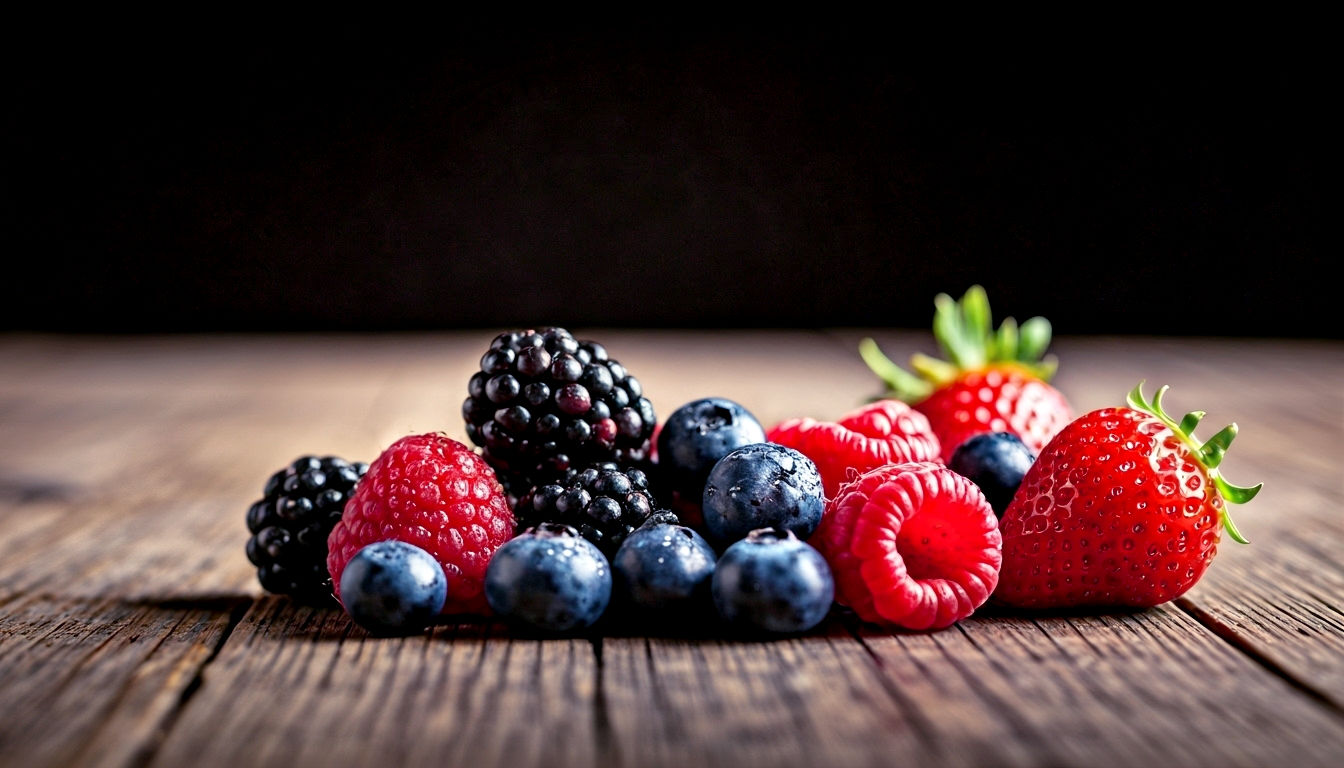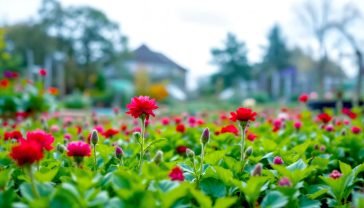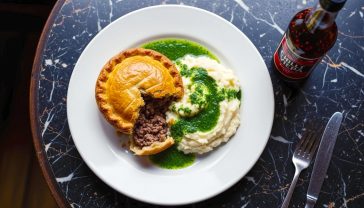From Berries to Your Brain: The Guide to Nature’s Most Vibrant Pigments
What gives blackberries their deep colour? Anthocyanins. This definitive guide explains what they are, their health benefits, and where to find them in the UK.

This post may contain affiliate links. If you make a purchase through these links, we may earn a commission at no additional cost to you.
Ever wondered what gives a blackberry its deep, inky colour, or a red cabbage its purplish-red hue? The answer is a group of remarkable natural compounds called anthocyanins. You’ve probably eaten them today without even realising it. They’re the secret artists behind the brilliant reds, purples, and blues in many of the fruits, vegetables, and flowers we see every day, from the strawberries in your summer trifle to the lavender in a country garden.
But anthocyanins are much more than just nature’s paintbox. Scientists are discovering they’re also tiny powerhouses packed with potential health benefits. Think of them as the unsung heroes of the plant world, working quietly behind the scenes to protect plants from harm while offering some impressive perks for us, too.
In this guide, we’ll take a deep dive into the world of anthocyanins. We’ll explore what they are, where to find them (including in some classic British favourites), and why they’re getting so much attention from health experts. We’ll unravel the science in a simple way, look at their fascinating history, and give you practical tips on how to get more of these colourful compounds into your diet. So, grab a punnet of berries, and let’s get started.
What Exactly Are Anthocyanins? A Simple Breakdown
At its core, the concept is quite simple. Anthocyanins are natural pigments that give many plants their vibrant colours. The name itself gives us a clue: it comes from two Greek words, anthos (meaning flower) and kyanos (meaning blue).
Think of them as a plant’s built-in sunscreen and pest control. They help protect plants from damage caused by harsh sunlight, cold temperatures, and other environmental stresses. They also play a role in attracting pollinators like bees and butterflies with their bright colours, ensuring the plant can reproduce.
The Science Bit: Flavonoids and Antioxidants
To get slightly more technical, anthocyanins belong to a larger family of plant compounds called flavonoids. You might have heard of flavonoids before; they’re often mentioned in discussions about healthy eating. This big family includes thousands of different compounds found in plants, many of which are known for their antioxidant properties.
So, what’s an antioxidant? Imagine your body is like a shiny new car. Over time, things like pollution, sunlight, and even just the process of turning food into energy can cause tiny bits of damage, like little spots of rust. These damaging molecules are called free radicals. Antioxidants are like a protective wax polish. They neutralise these free radicals, helping to prevent the damage before it starts.
Anthocyanins are particularly good at this. They are powerful antioxidants, which is one of the main reasons they’re believed to be so good for our health. They help protect our cells from a type of damage called oxidative stress, which is linked to ageing and a whole host of chronic diseases.
How Their Colour Changes: A Chemical Chameleon
One of the most fascinating things about anthocyanins is that their colour can change. It all depends on their pH level—how acidic or alkaline their environment is.
- In acidic conditions (like in a lemon), they tend to appear red.
- In neutral conditions, they are often purplish.
- In alkaline conditions (like in soapy water), they can turn blueish or even greenish.
You can see this for yourself in the kitchen. If you’ve ever cooked red cabbage, you’ll know it can sometimes turn a strange blue colour. This happens when it’s cooked in tap water that is slightly alkaline. Add a splash of vinegar or lemon juice (which are acidic), and you’ll see it magically turn back to a vibrant reddish-purple. This colour-changing chemistry is not just a fun kitchen experiment; it’s fundamental to how anthocyanins function in nature and in our bodies.
A Rainbow on Your Plate: Where to Find Anthocyanins
The good news is that anthocyanins are found in a huge variety of delicious and readily available foods. As a general rule, if a fruit or vegetable is red, purple, or blue, it’s likely to be a good source. The darker the colour, the higher the concentration of anthocyanins.
Here are some of the best sources, including many that are grown right here in the UK.
Berries, Berries, and More Berries
Berries are the undisputed kings of the anthocyanin world. They are absolutely packed with them, which is what gives them their rich, beautiful colours.
- Blackcurrants: These little British powerhouses are one of the richest sources of anthocyanins on the planet. They have a deep, almost black colour, signalling a very high concentration. Perfect for jams, cordials, or a classic blackcurrant crumble.
- Blackberries (Brambles): A familiar sight in British hedgerows in late summer, blackberries are another fantastic source. Foraging for them is a wonderful British tradition.
- Blueberries: While often imported, British-grown blueberries are available in the summer. Their name says it all—their blue skin is bursting with anthocyanins.
- Strawberries: A quintessential part of a British summer, especially with a dollop of cream at Wimbledon. The bright red colour comes from anthocyanins.
- Raspberries: Another summer favourite, raspberries get their lovely ruby-red shade from these powerful pigments.
- Cherries: Particularly tart varieties like Morello cherries have a deep red colour and a high anthocyanin content.
Vegetables with a Splash of Colour
It’s not just fruit that contains these beneficial compounds. Many vegetables are also excellent sources.
- Red Cabbage: As mentioned earlier, this is a classic example. Its vibrant leaves are a great source, and it’s a staple in British winter dishes like braised red cabbage with apple.
- Aubergine (Eggplant): The deep purple, glossy skin of an aubergine is where all the anthocyanins are hiding. So, don’t peel it!
- Red Onions: That purplish tint in a red onion comes from anthocyanins. They add a splash of colour and a health boost to salads and sandwiches.
- Purple Sprouting Broccoli: This seasonal British veg has beautiful purple florets, which indicate the presence of anthocyanins.
- Radishes: The bright red skin of a radish is another source, adding a peppery crunch to your salads.
- Beetroot: While the main pigment in beetroot is a different type called betalain, it does contain some anthocyanins as well.
Other Surprising Sources
Anthocyanins can also be found in some less obvious places.
- Purple Potatoes and Carrots: While not as common as their orange and white cousins, heritage varieties of potatoes and carrots with purple flesh are becoming more popular and are excellent sources.
- Red Grapes: The skin of red and purple grapes is rich in anthocyanins. This also means that red wine contains them (in moderation, of course!).
- Blood Oranges: That beautiful reddish blush in the flesh of a blood orange is due to anthocyanins, which develop when the fruit is exposed to cold temperatures during ripening.
- Black Rice: Also known as ‘forbidden rice’, this type of rice has a deep purplish-black colour and is a great source of anthocyanins.
The Health Benefits: Why Should We Care About Anthocyanins?
So, we know they’re colourful and found in tasty foods, but what do they actually do for our health? The body of research is growing all the time, and while no single food compound is a magic bullet, the evidence for the benefits of an anthocyanin-rich diet is becoming very compelling.
It’s important to remember that much of this research is ongoing. Scientists are still working out the exact mechanisms, but the potential benefits are exciting.
1. Heart Health: A Friend to Your Ticker
This is one of the most well-researched areas. Several large studies have suggested that a regular intake of anthocyanins is good for your cardiovascular system.
- Improving Blood Pressure: Anthocyanins are thought to help relax and widen blood vessels, which can lead to lower blood pressure. Think of your arteries as tiny hoses; if they are more flexible, it’s easier for the blood to flow through.
- Reducing “Bad” Cholesterol: They may help to prevent the oxidation of LDL cholesterol. This is important because it’s the oxidised, damaged form of LDL cholesterol that tends to stick to artery walls and cause blockages.
- Fighting Inflammation: Chronic inflammation is a key driver of heart disease. As powerful antioxidants, anthocyanins have anti-inflammatory properties, helping to calm down this damaging process throughout the body.
A major study involving thousands of women found that those who ate the most berries (more than three servings a week) had a significantly lower risk of having a heart attack.
2. Brain Health: Food for Thought
Your brain is incredibly active and uses a lot of oxygen, which makes it particularly vulnerable to oxidative stress. The antioxidants in anthocyanins seem to be able to cross the blood-brain barrier, a protective shield that surrounds the brain. This means they can get to work right where they’re needed most.
- Boosting Memory and Learning: Studies, particularly in older adults, have shown that regular consumption of anthocyanin-rich foods like blueberry juice can improve memory and cognitive function.
- Slowing Age-Related Decline: By protecting brain cells from damage and reducing inflammation in the brain, anthocyanins may help to slow down the mental decline that can come with age. Some researchers are exploring their potential role in reducing the risk of conditions like Alzheimer’s disease, although more research is needed.
Think of it as giving your brain’s clean-up crew a helping hand, allowing your brain cells to communicate more effectively for longer.
3. Anti-Cancer Properties: A Potential Ally
This is a very complex area, and it’s crucial to be clear: no food can cure cancer. However, lab-based and animal studies have shown that anthocyanins may have properties that could help in the fight against it.
- Preventing Cell Damage: By acting as antioxidants, they help protect our DNA from the kind of damage that can lead to cancer.
- Slowing Tumour Growth: In test tubes, anthocyanins have been shown to slow the growth of certain cancer cells and even encourage them to self-destruct (a process called apoptosis).
- Inhibiting Angiogenesis: This is the process by which tumours create new blood vessels to feed themselves. Some studies suggest anthocyanins might help to block this process.
Again, this research is in its early stages. But a diet rich in a variety of colourful fruits and vegetables, including those high in anthocyanins, is consistently recommended as part of a cancer-protective lifestyle.
4. Eye Health: Protecting Your Peepers
Your eyes, like your brain, are hotspots of metabolic activity and are susceptible to damage from light and oxygen. The retina, in particular, is vulnerable.
The story goes that British Royal Air Force pilots during World War II ate bilberry jam (bilberries are very similar to blueberries and are packed with anthocyanins) to improve their night vision. While this is likely a bit of a myth, modern science has shown there might be some truth to the idea that anthocyanins are good for your eyes.
They are thought to help:
- Strengthen the tiny blood vessels in the eyes.
- Improve blood flow to the retina.
- Regenerate crucial pigments in the eye that are involved in vision.
This may help protect against conditions like age-related macular degeneration (AMD) and cataracts.
5. Managing Type 2 Diabetes
Emerging research suggests that anthocyanins could play a role in blood sugar management. They appear to improve insulin sensitivity, which is how well your cells respond to the hormone insulin. In people with type 2 diabetes or insulin resistance, this process doesn’t work properly.
By making cells more responsive to insulin, anthocyanins may help to keep blood sugar levels more stable after a meal. This could make them a valuable part of a diet designed to prevent or manage type 2 diabetes.
A Brief History: From Ancient Dyes to Modern Science
Humans have been interacting with anthocyanins for thousands of years, long before we knew what they were called.
- Ancient Dyes and Inks: For centuries, people used anthocyanin-rich plants to create dyes for clothing, inks for writing, and even makeup. The deep reds of madder root and the blues of the woad plant were highly prized.
- Folk Medicine: Many of the foods we now know are high in anthocyanins—like berries and red grapes—have been used in traditional and folk medicine for generations to treat everything from infections to circulatory problems. It turns out our ancestors were onto something!
- Scientific Discovery: The term ‘anthocyanin’ was first coined in 1835 by a German botanist named Ludwig Clamor Marquart. However, it wasn’t until the 20th century that scientists really began to understand their chemical structure and their role in plants. The Nobel Prize winner Richard Willstätter did pioneering work on plant pigments, including anthocyanins, in the early 1900s.
It’s only in the last few decades, with advances in technology, that we’ve been able to study their effects on human health in such detail. What started as simple observation—that colourful plants were often good for you—is now being backed up by rigorous scientific evidence.
Getting More Anthocyanins in Your Diet: Practical Tips
Increasing your intake of these beneficial compounds doesn’t have to be complicated. It’s all about adding more colour to your plate.
- Eat the Rainbow: This is the simplest rule. Don’t just stick to green veg. Actively try to include red, purple, and blue foods in your meals every day.
- Don’t Peel: For many fruits and vegetables, like aubergines, apples, and red grapes, the anthocyanins are concentrated in the skin. So, wash them well and eat the skin whenever possible.
- Choose Darker Varieties: When you have the choice, opt for the more intensely coloured version. For example, choose black grapes over green, or black rice over white.
- Frozen is Just as Good: Fresh berries are wonderful when in season, but they can be expensive out of season. Frozen berries are a brilliant alternative. They are picked and frozen at their peak, so they retain all their nutritional goodness, including their anthocyanin content. They are perfect for smoothies, porridge, or baking.
- Start Your Day with Colour: A simple way to get a head start is to add a handful of berries to your morning porridge, cereal, or yoghurt. Or whizz them up into a smoothie.
- Colourful Salads: Liven up your salads with ingredients like red onion, radishes, and shredded red cabbage.
- Cook Smart: Some cooking methods can reduce the anthocyanin content. Steaming or stir-frying vegetables is generally better than boiling them for a long time, as the pigments can leach out into the water. If you do boil them (like red cabbage), try to use the cooking water in a gravy or sauce to retain the nutrients.
- Think Seasonally: In the UK, we have wonderful seasonal produce. Enjoy strawberries and raspberries in the summer, and forage for blackberries in the autumn. In the winter, embrace hearty vegetables like red cabbage.
What About Supplements?
You might see anthocyanin or berry extract supplements for sale. While these can provide a concentrated dose, most nutrition experts agree that it’s always better to get your nutrients from whole foods.
When you eat a blackberry, you’re not just getting anthocyanins. You’re also getting fibre, vitamin C, and a whole host of other beneficial plant compounds that all work together. This is known as food synergy. The whole is greater than the sum of its parts. Supplements can’t replicate this complex interaction. Plus, food is a lot more enjoyable!
The Future of Anthocyanins: What’s Next?
The world of anthocyanin research is incredibly active. Scientists are continuing to explore their health benefits in more detail, conducting larger and more long-term human studies.
Some exciting areas of future research include:
- Personalised Nutrition: Understanding how our individual genetics might affect how we absorb and use anthocyanins.
- Gut Health: Investigating how anthocyanins interact with our gut microbiome—the trillions of bacteria that live in our digestive system and play a crucial role in our health.
- Bioavailability: Working out how to improve the body’s ability to absorb and use anthocyanins from food. For example, eating them with a small amount of healthy fat might increase absorption.
- New Food Sources: Plant breeders are developing new varieties of crops that are naturally higher in anthocyanins, like purple tomatoes and purple wheat. This could make it even easier to get them into our diet.
The Takeaway: A Colourful Conclusion
Anthocyanins are a perfect example of how wonderfully clever nature is. These vibrant pigments do so much more than just make our food look appealing. They are a gift from the plant world, offering protection to the plants they inhabit and a wealth of potential health benefits for us.
From protecting your heart and brain to potentially reducing your risk of chronic diseases, a diet rich in these colourful compounds is one of the simplest and most delicious things you can do for your long-term health.
You don’t need to follow complicated diets or buy expensive supplements. Just head to your local greengrocer or supermarket and fill your basket with a rainbow of red, purple, and blue foods. Embrace the deep purple of a British blackcurrant, the vibrant red of a summer strawberry, and the rich colour of a humble red cabbage. Your body will thank you for it.
Further Reading
For those interested in delving deeper into the science and nutritional advice, here are some highly respected resources:
- The British Nutrition Foundation: An excellent source of evidence-based information on nutrition and health. www.nutrition.org.uk
- NHS (National Health Service): Provides practical and trustworthy advice on healthy eating. www.nhs.uk/live-well/eat-well/
- The Linus Pauling Institute – Micronutrient Information Center: A world-renowned research institute at Oregon State University providing detailed scientific information on micronutrients and phytochemicals, including flavonoids and anthocyanins. lpi.oregonstate.edu/mic/dietary-factors/phytochemicals/flavonoids
- PubMed: A searchable database of biomedical literature from the U.S. National Library of Medicine. A great resource for finding original research papers on anthocyanins. pubmed.ncbi.nlm.nih.gov






